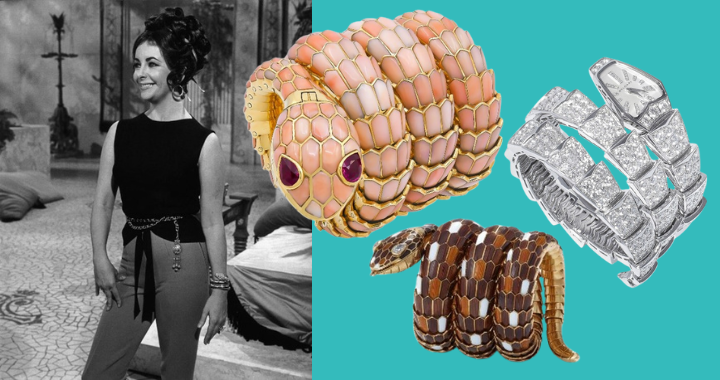Bulgari’s Serpenti Watch Collection, its History and Value
Arguably one of Bulgari’s most iconic collections across both jewellery and watches, the Serpenti collection has been and continues to be a firm favourite, especially in the year of the snake! Seen adorning countless celebrities, from Elizabeth Taylor in the early days of the Serpenti watch, to Adele in the present day, who has been spotted wearing her yellow gold and diamond set Serpenti watch to basketball games, these timepieces are a wonderful blend between sculpture, design and watchmaking. With a new edition of Serpenti watches launched in January of this year, the Serpenti watches have had a hold over watch collectors for over 75 years.
The first Bulgari Serpenti collection was launched in 1948, created from the brand’s Tubogas technique patented in 1881– featuring gold or steel strips wrapped around a core. This simple yet effective design was the unassuming starting point for the breathtakingly detailed creations that were to follow.

It was in the 1960s that the Bulgari Serpenti watch gained its scales and cult status. Featuring individually applied enamel and gemstone hexagonal scales to each Serpenti watch and movements hidden within the mouth of each snake, Bulgari created wearable sculptures that were frequently seen gracing film stars and Vogue magazine covers. Although prevalent in mainstream media, fewer than 100 of these early Serpenti bracelet watches were created, and the variety in their designs, dials and movements is remarkable.
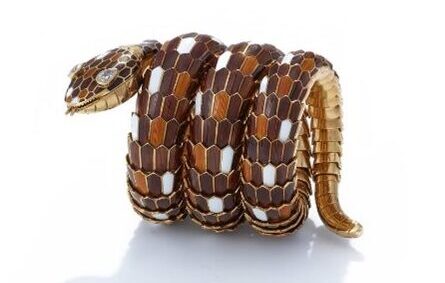
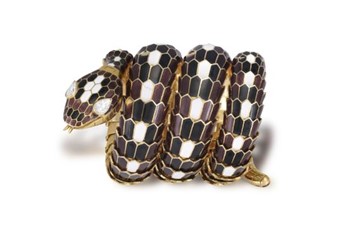
We would recommend an insurance valuation in the region of £150,000-175,000 each for the above pieces.
Bulgari did not just use neutral, earth tones for its 1960s Serpenti bracelet watches. Bright enamelled creations in pink, green, blue, yellow, red and cream were created in this creative and colourful decade.
More complex a creation still are the gem-set Serpenti watches. Incredibly rare and sought after by collectors, examples set with turquoise, tiger’s eye, lapis lazuli and even onyx scales were meticulously created. One such example is currently available to purchase on 1st Dibs for £542,000. Set throughout with individual coral cabochon scales and accented with pear cut ruby eyes, this piece is adorned with a Jaeger Le-Coultre movement. This particular piece was exhibited at the Houston Museum of Natural Science as part of the Bulgari: 130 Years of Masterpieces, Houston, Texas, May 2 – October 5, 2014.
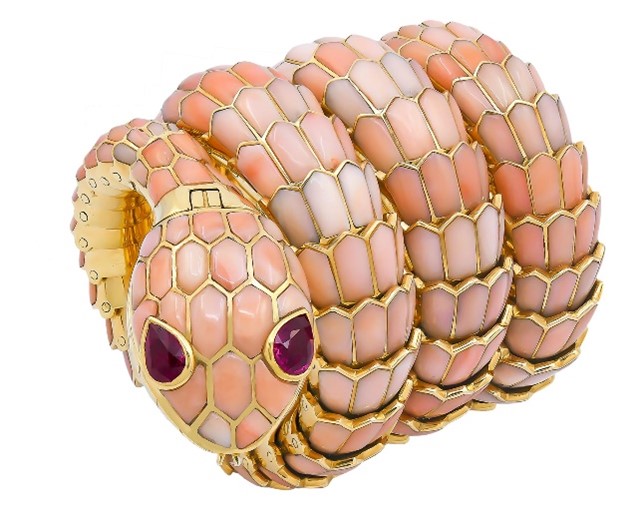
1970s and 80s Serpenti Watches
Having previously collaborated with esteemed watchmakers such as Jaeger-LeCoultre, Vacheron Constantin, and later Movado in creating the tiny movements for these snake bracelet watches, Bulgari began to produce its own movements from around 1978 onwards, and this decade marked a return to the its Tubogas roots, with comparatively slimmed down designs of snakes that wrapped twice or three times around the wearer’s wrist.
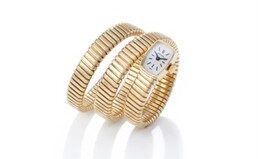
The Modern Day Serpenti Watch
In 2009, Bulgari marked its 125th anniversary by reintroducing the Serpenti in a new, more geometric form. This more contemporary look aligned with Bulgari’s Serpenti jewellery line and continues to feature in the brand’s most current collections.
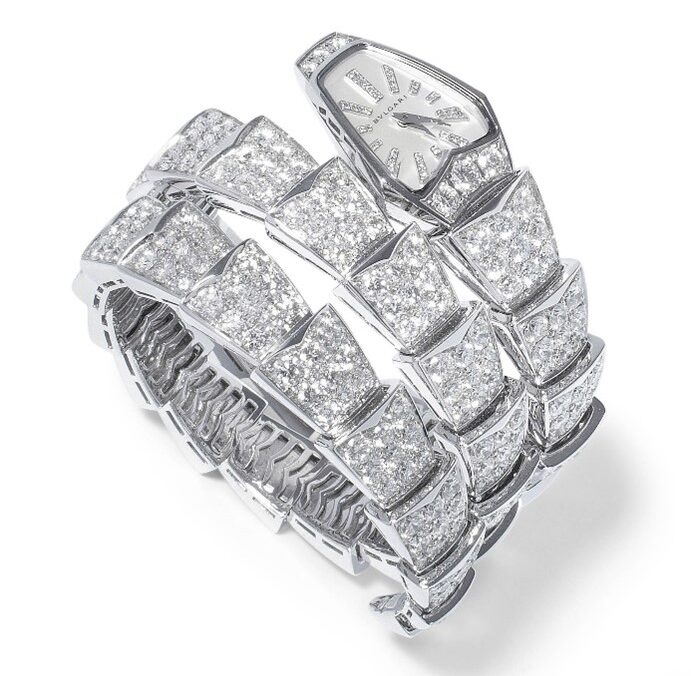
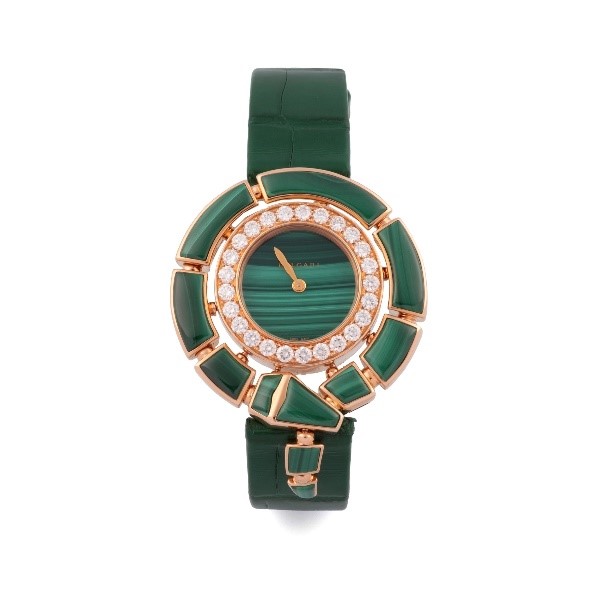
The most recent iterations of the Serpenti watch were launched on 21st January 2025. For the first time ever, Serpenti watches with in-house BVS100 automatic movements are available to purchase. Designed with an exhibition case back to highlight the movement, these watches will retail anywhere from $10,200 for a steel model, all the way to $52,000 for a rose gold Serpenti, and €139,000 for the diamond-set Serpenti Seduttori. These will be available to purchase in the UK from April.

Valuations of Bulgari Serpenti Watches
Bulgari’s current Serpenti collection of watches to purchase in the UK currently are retailing between £4,920 and £83,000 at the time of writing. As seen above, the sculptural snake creations from the 1960s hold the most value owing to their rarity, the sheer craftsmanship involved and of course their place in design history. With the ongoing innovation and sartorial appetite for these iconic watches continuing to flourish, we would expect subsequent values to increase, particularly for earlier models and limited references.






